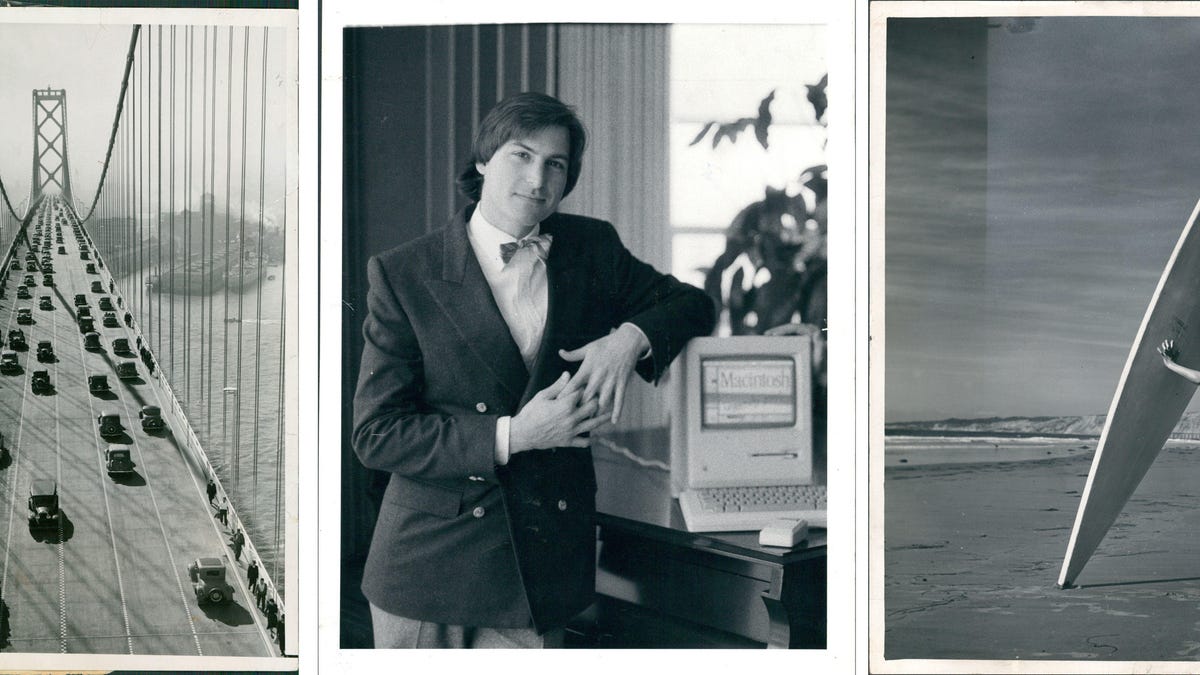Google AI helps NYT get a handle on 5 million photo archive
Neural networks are analyzing photos and captions dating back to the 1870s.

The New York Times is digitizing photos from its archive. Some examples: the first traffic on the Bay Bridge connecting San Francisco and Oakland, Apple co-founder Steve Jobs in 1984, and Regina Gleason with her surfboard in 1948.
Google's computer brains are helping The New York Times turn a historic archive of more than 5 million photos into digital data that'll appear in the newspaper's features about history.
The newspaper's "morgue" has 5 million to 7 million photos dating back to the 1870s, including prints and contact sheets showing all the shots on photographers' rolls of film. The Times is using Google's technology to convert it into something more useful than its current analog state occupying banks of filing cabinets.
Specifically, it's using Google AI tools to recognize printed or handwritten text describing the photos and Google's storage and data analysis services, the newspaper said. It plans to investigate whether object recognition is worthwhile, too.
A photo from The New York Times' morgue can have a wealth of information on the back.
Artificial intelligence -- specifically the approach using neural networks modeled loosely on human brains -- is profoundly changing photography. In addition to helping smartphone cameras take better shots in the first place, AI's image recognition can sort photos by who's in them and can recognize landmarks and other subject matter. That's great if you weren't as diligent about labeling or filing them as newspaper photographers.
In the Times' case, AI makes for a better transition from analog to digital.
"We've always known that we were sitting on a trove of historical photos," Monica Drake, the Times' assistant managing editor, said in a statement. "Cloud technology allows us to not only preserve this archival source, but easily search and pull photos to provide even more historical context."
The New York Times will use the photos in a feature called Past Tense that will spotlight history. The photos won't be included in a public forum like the Flickr Commons, though, the newspaper said.
CNET's Gift Guide: The best place to find the perfect gift for everyone on your list this season.
NASA turns 60: The space agency has taken humanity farther than anyone else, and it has plans to go further.

